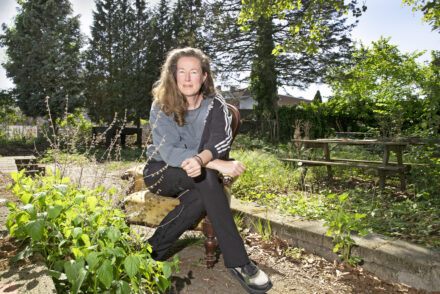The Curse of the Black Pete
“Will you raise your son with the tradition of Saint Nicholas?”, an international friend asked me as I looked at my little boy of seven months. It made me think: what is my position in the first place?
Plenty of time to ponder about this, you might think, but considering it has already been four years since the controversy started, I can’t be too sure if the cultural dispute will be settled in time. Instead of dialectically negotiating some sort of new Habermasian common agreement, it seems that the positions harden and become more combative every year.
Ah, Habermas… I wish his view on the public sphere wasn’t a utopia: a rational order wherein all sides could meet up to freely exchange perspectives, which at the same time compels to find common ground. Postmodern society often turns out to be completely gridlocked by pillarization, which we now call ‘identity politics’.
Surely, the problem is not so much the holy Saint Nicholas (‘Sinterklaas’) himself, but his band of Black Petes still accompanying him when he makes his entrance in most towns and villages in the wintry Netherlands.
Return to slavery
In 2014 the UN-committee chaired by scholar and activist Mireille Fanon-Mendes-France, daughter of the eminent philosopher and activist Frantz Fanon, condemned the tradition of Black Pete. What officially is declared as ‘intangible cultural heritage’ by the Dutch Center for Intangible Cultural Heritage, should be considered racist, discriminatory and a ‘return to slavery’ according to the UN. That same year, precisely this message was conveyed by the Dutch filmmaker and activist Sunny Bergman in her documentary ‘Zwart als roet’ (‘Black as soot’, as the folkloristic rhyme on Black Pete goes).
What happened afterwards is the situation we’re still in: anti-Pete activists demonstrating when Saint Nicholas rides into town on his white horse with his black servants, and counter-activists, who maintain that Black Pete is essential to Dutch culture which must be defended against foreign intruders at all cost, leftist globalists and Cultural Marxists allegedly happy to trade national laws and customs for Sharia or who knows what kind of alternative.
Personally, I can relate to both groups in some respects. Saint Nicholas is part of my upbringing and belongs to the more joyful parts of my cultural memory: early darkness, stormy nights, the excitement when Black Pete banged fiercely on the door, and when he managed to secretly deliver presents and candy through the chimney, or better said in the case of my parental house: through the central heating (how on earth did he do that?). The strange thing is that I never related Black Pete to black kids in my classroom, or to black men and women in general – although I can imagine that they might have done so themselves. Not realizing this, not being sensitive to this, might have been the result of my white colorblindness, or perhaps at least my childish and naive belief in the magic of the story.
Product of the nineteenth century
Nonetheless, I feel that it is unjust to simply transpose the stereotype of Black Pete to other cultural frames, such as the stereotypical figure of Blackface and his part in the horrendous history of slavery in the US, automatically turning the Dutch majority into malevolent racists. At least in my memory, Pete was the smart and impressive one, with his pirate-like outfit and his rod and sack for taking bad children with him. Somewhat frightening, for sure, but not stupid or clumsy – those characteristics belonged to the old Saint with the beard, who annually managed to forget his Book with all the names of the children and how well they behaved.
At the same time, however, I don’t think that traditions cannot be rewritten or adjusted. As a matter of fact, Black Pete already was an adjustment of fairly recent times, a product of the nineteenth century. We cannot find him in writings and depictions before 1850. Actually it was Saint Nicholas himself who was depicted as being a blackish, terrifying figure of folklore, still known in Eastern Europe as the demonic figure of ‘Krampus’, celebrated during the Feast of Saint Nicholas on the 6th of December.
Halfway the 19th century the legendary Christian figure of Saint Nicholas, modelled after the holy Nicholas of Myra (living in Turkey, approximately 270-343 AD), was somehow split in two: the good white saint and his bad black servant. I think it is not a coincidence that this happened in precisely the age of nationalism, institutionalized ethnocentrism and scientific racism, and that it would be a justified idea to undo this unholy alteration. The argument that we should let the children be, holds no ground for me: the celebration never has been innocent child’s play, it is completely orchestrated by adults who run the show. And would we let kids play any other game if it would contain elements that are disapproved of?
Primordial Father
Yet I must admit that I’m not a fan of a recent alteration which was the outcome of the debate of the last years: shiny happy Petes in all kinds of colors, ‘rainbow Petes’ as they are called. I think it completely does away with the psychological appeal of most alluring traditional celebrations: they all share a certain relation with fear, violence, retribution, this ambiguity of both the Good and the Bad.
Think of the good old founding myth of the Primordial Father described by Sigmund Freud. The primal father carried the privilege of violence, guaranteeing the order of the primal horde. At a certain moment, the sons decided they wanted to enjoy the power and conspired to kill the father. But what happened when the mighty father was overtaken? Not really knowing what to do with their newly obtained freedom, or maybe scared to be the next victim of a new revolution to come, they shied away from the place of power. They reinstalled the Father by the substitute of a totem to be honored and celebrated, thereby reaffirming his authority, his Law.
For philosophical anthropologists, this founding myth can be seen as a parable for modern democracy: the absolute ruler is wiped out by the revolution, but the place of power, as Claude Lefort formulated it, did not become occupied by some new absolute monarch, but remained ‘empty’. Power became only temporary and volatile, or if you like it to be phrased more dramatically: marked by death. Yes, as a politician you can exert it for a few years in a democracy – but you are not really present at the place of power, but only a representative, a derivative, and after your term there will be new elections, which means you have to distance yourself from power entirely. Absolute, total or everlasting Power is only commemorated in cultural ceremony, in totems such as the ceremonial versions of a monarchy, or in folklore. The totem represents the sacred One who has all the goodies and decides who will get them and who will not, but it is also cursed and tabooed, because taking his place would mean that the order is likely to collapse.
Sweet zombies and cute pirates
I like Saint Nicholas and Pete because they still combine enjoyment and paternal authority, pleasure and punishment, with the deeper message: you can have a lot (if you behave!), but you can’t have it all. Very unlike the cuddly Santa Claus, the – Always Coca Cola! – neoliberal version of Saint Nicholas. If we’d follow the philosopher Slavoj Žižek, we might consider sending the UN to Santa as well. Because isn’t the postmodern liberal Father who takes nothing and excessively gives everything (and compels you to Enjoy!) not even worse than the old patriarchal figure who at least gives you the space to desire and mourn what must not or cannot be taken?
How to share this with my son? I started revamping Saint and Pete myself, writing a story for him, inspired by the temptation of Saint Anthony and the devilish creatures appearing to him in the desert, Krampus, the horror movie Sint(Dick Maas, 2010), and Pirates of the Caribbean: The Curse of the Black Pearl. Saint and Pete as pirates, or zombies, but sweet zombies, cute pirates, I promise.






